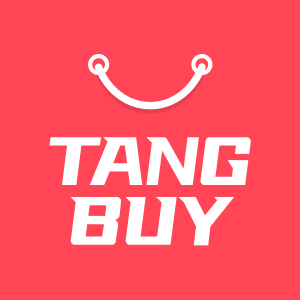Step-by-Step Guide to Selling Wholesale Online in 2025
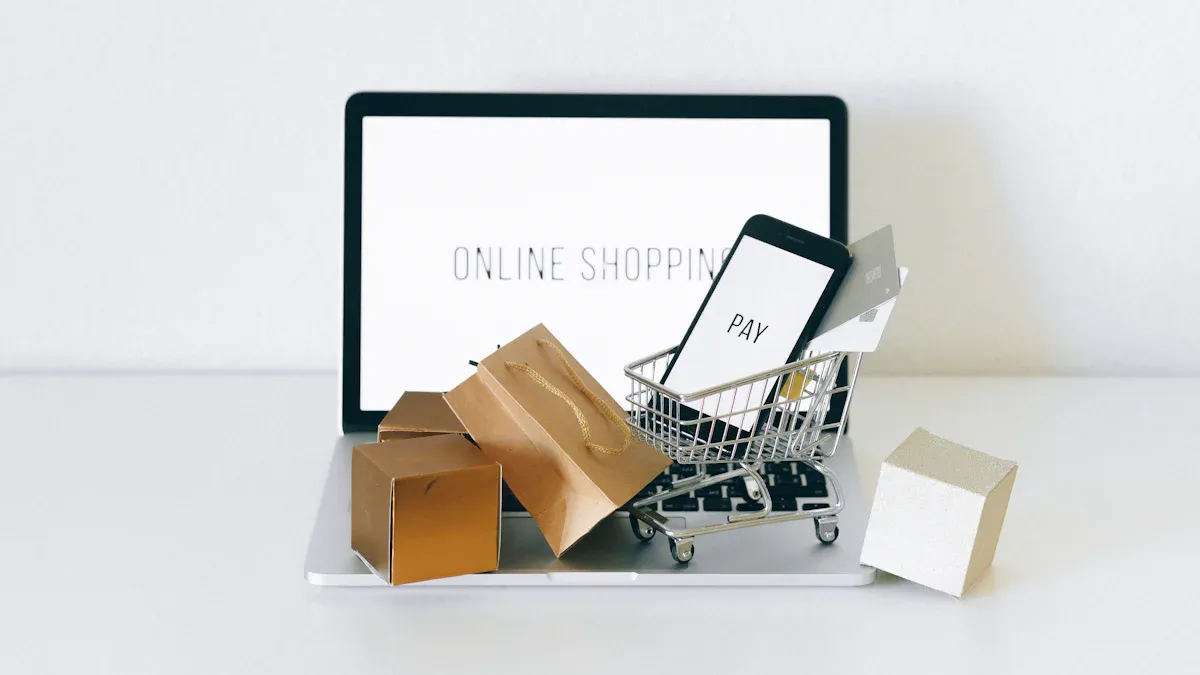
You want to sell wholesale online in 2025? Start by choosing products people need. Register your business and make sure you follow the rules. Find suppliers you can trust. Set your prices so both you and your buyers win. Choose where you want to sell, like a B2B marketplace or your own site. Share your products with shops and keep track of every order. Wholesale lets you reach more customers and grow faster. Take each step with care and you will see results.
Key Takeaways
Begin your wholesale business by picking products that shops want. Choose items that sell well in large amounts. Make sure your business can handle big orders and keep enough stock. Give good customer service to all buyers. Look for reliable suppliers by doing research and testing samples. Build strong partnerships with the best suppliers. Use B2B marketplaces or your own website to sell products. Pick simple tools to manage orders and take payments safely. Set clear prices and minimum order amounts. Decide on payment rules to protect your profit and keep buyers happy. Make clear and nice sales materials like catalogues and product pictures. These help shops pick your products. Build good relationships with buyers by talking often and giving quick help. Follow up with buyers regularly. Watch your sales, orders, and what customers say. Use this information to make your business better and grow over time.
Wholesale Basics

What is Wholesale
You may ask what wholesale means when selling online. Wholesale is when you buy lots of goods from makers. You then sell these goods to other businesses, like shops or online sellers. You do not sell straight to customers. Here is what makes wholesale different:
You are the link between the maker and the shop.
You often buy and sell many items at once, but some sites let you sell less.
You can be a distributor, a merchant wholesaler, or a maker who sells directly.
You give lower prices for each item because you sell in bulk.
Most deals are business-to-business (B2B), not business-to-customer (B2C).
Many wholesalers set a minimum order quantity (MOQ) or minimum order value (MOV), but some sites are more flexible.
Wholesale lets you sell more goods at one time. Shops can buy at a lower price. You can build strong business links and reach more buyers than selling one by one.
Wholesale vs Retail
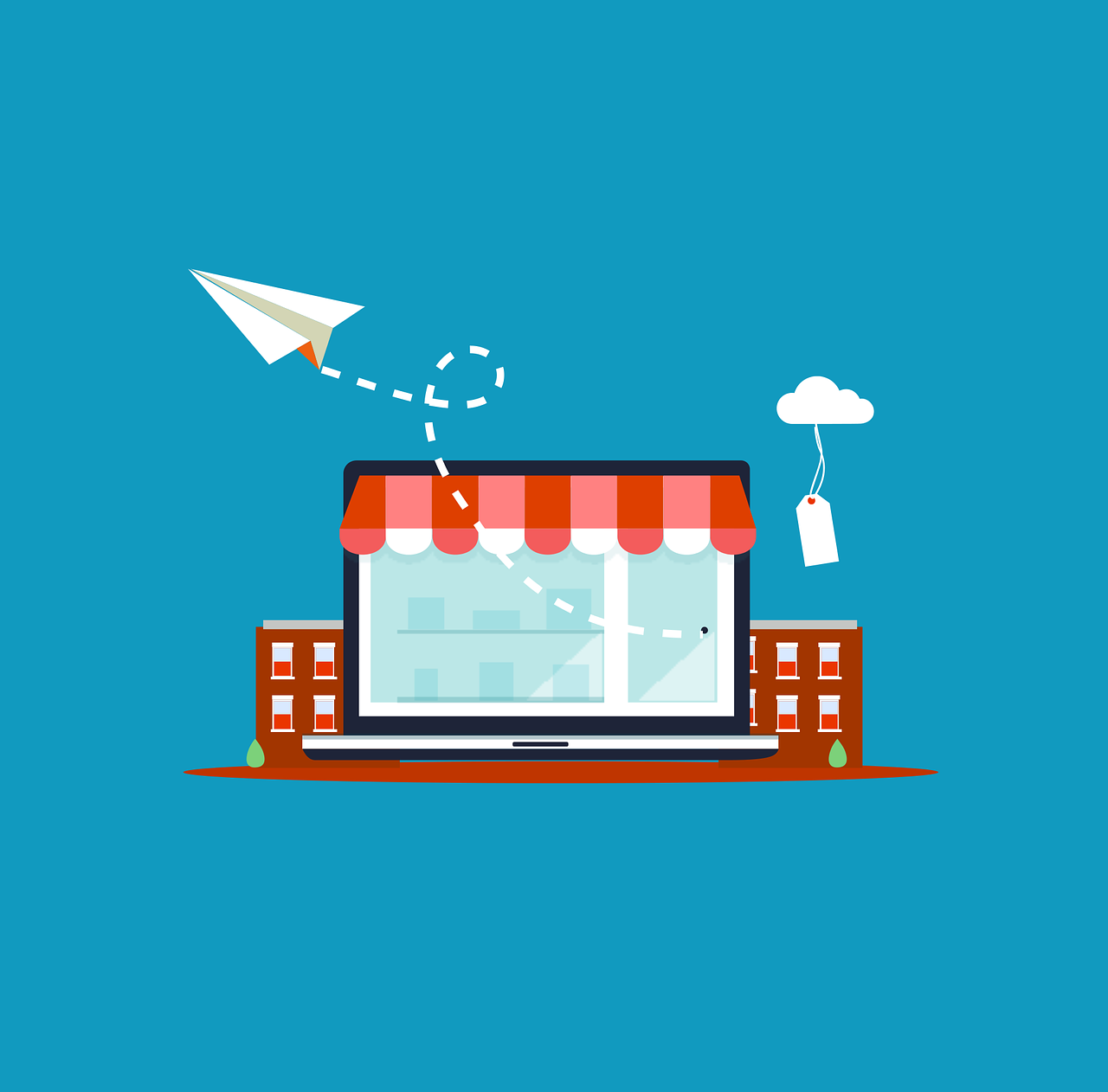
Let us see how wholesale and retail are not the same. This table helps you compare:
Aspect | Wholesale | Retail |
|---|---|---|
Customer Type | Businesses (retailers, resellers) | Individual consumers |
Sales Volume | Many transactions, small quantities | |
Pricing | Lower price per unit | Higher price per unit |
When you sell wholesale, you work with other businesses. You sell many items at once and give a better price for each. Retail is different. You sell to people who use the product. They buy one or two at a time, and you charge more for each item.
Benefits
Why should you think about wholesale? Here are some reasons:
You can sell more goods in less time.
You make long-term links with other businesses.
You get steady, repeat orders from your buyers.
You spend less time on single sales and more time growing your business.
You can plan your stock and money better because you know your big orders before.
Tip: Wholesale can help you grow faster than retail, especially if you want to reach more shops or move into new markets.
Wholesale helps you grow your business, save time, and let more people get your products through other sellers. If you want to do more than single sales and build a bigger business, wholesale is a good choice.
Is Wholesale Right for You
Business Readiness
Before you jump into wholesale, you need to check if your business is ready. Wholesale is not the same as selling a few items online. You must handle bigger orders and work with other businesses. Ask yourself these questions:
Do you have enough stock to fill large orders?
Can you manage your cash flow if buyers pay later?
Are your systems set up for tracking orders and stock?
Do you have a plan for customer service if a shop has a problem?
If you answer “yes” to most of these, you are on the right track. If not, you may want to start small and build up. Wholesale works best when you have a strong base.
Tip: Start with a few trusted buyers. Learn the process before you scale up.
Product Suitability
Not every product fits the wholesale model. Some items sell better in bulk, while others do not. Think about your products. Would a shop want to buy them in large amounts? Are they easy to store and ship? Here are some things to check:
Products with steady demand work well.
Items that do not spoil or break easily are safer.
Unique or branded goods can attract more shops.
Products with clear packaging and labels look more professional.
You can use this table to help decide:
Product Type | Good for Wholesale? | Why? |
|---|---|---|
Tinned food | ✅ | Long shelf life |
Handmade art | ❌ | Hard to make in bulk |
Phone cases | ✅ | Small, easy to ship |
Custom cakes | ❌ | Perishable, made to order |
If your products tick most boxes, you are ready to try wholesale.
Common Challenges
Wholesale can help you grow, but it comes with challenges. You might face:
Shops asking for lower prices than you expect.
Large orders that stretch your stock or cash.
Buyers who pay late or change their minds.
More paperwork and rules to follow.
You do not need to worry. Every business faces bumps in the road. You can solve most problems with good planning and clear rules.
Note: Write down your terms and share them with buyers. This helps avoid confusion and keeps your business safe.
Wholesale is not for everyone, but you can succeed if you prepare well and choose the right products. Take your time, learn as you go, and you will see your business grow.
Product Selection
High-Demand Products
You want to pick products that shops need and buyers want. High-demand products help you get more orders and repeat business. Start by looking at what sells well in your industry. You can check online marketplaces, trade magazines, or even ask your current customers what they need most.
Here are some ways to spot high-demand products:
Look at best-seller lists on B2B platforms like Faire or Alibaba.
Search for products with lots of reviews and steady sales.
Check what your competitors offer and see what moves fast.
Ask shop owners what they struggle to keep in stock.
Tip: Products that solve a problem or save time often sell best. Think about items people use every day or things that make life easier.
Market Trends 2025

Trends change fast, especially online. In 2025, you will see new products and ideas take off. If you follow trends, you can stay ahead of the game and offer what buyers want before everyone else does.
Some trends to watch in 2025:
Trend | Why It Matters |
|---|---|
Eco-friendly goods | Shops want to offer green choices. |
Smart home devices | More people use tech at home. |
Health & wellness | Buyers look for products that help them feel better. |
Personalisation | Custom items make gifts special. |
You do not need to chase every trend. Pick one or two that fit your brand and your skills. Keep an eye on social media and trade news. You can also join online groups for your industry to spot new ideas early.
Niche vs Broad
You face a big choice: sell to a niche market or go broad. A niche market means you focus on a small group with special needs. A broad market means you offer products for everyone.
Niche Market Pros:
Less competition
Loyal buyers
Easier to stand out
Broad Market Pros:
More potential buyers
Bigger sales volume
Easier to add new products
If you are just starting, a niche can help you build a name and get loyal customers. When you grow, you can add more products and reach a wider market.
Think about your skills, your contacts, and what you enjoy selling. Choose the path that fits you best. You can always change your focus as your business grows.
Product Testing
You might feel excited to start selling your products in bulk, but you should always test them first. Product testing helps you avoid costly mistakes. You want to know if your products meet the needs of shops and their customers. Testing also shows you if your products have any problems before you invest too much money.
Why test your products?
You spot issues early, like packaging problems or faults.
You see if shops and buyers actually want your product.
You get feedback to improve your offer.
You build trust with retailers by showing you care about quality.
Tip: Testing saves you time and money in the long run. It helps you avoid big losses from unsold stock or unhappy buyers.
How can you test your products for wholesale?
Start Small
Order a small batch from your supplier. This lets you check the quality and see how the product looks and feels. You can spot any issues before you order in bulk.Share Samples
Give samples to a few trusted shop owners or buyers. Ask them for honest feedback. Find out what they like and what they would change.Sell in Limited Quantities
Offer your product to a small group of retailers. Watch how fast it sells. Listen to what the shops say about the product and the packaging.Gather Feedback
Use a simple survey or just ask questions. For example:Did the product arrive in good condition?
Was the packaging clear and strong?
Would you buy this again?
What would make it better?
Test Online
List your product on a B2B marketplace with a low minimum order. See if you get interest from shops. Track which products get the most attention.
What should you look for during testing?
What to Check | Why It Matters |
|---|---|
Product quality | Shops want items that last. |
Packaging strength | Weak packaging leads to returns. |
Clear labelling | Shops need easy-to-read info. |
Demand from shops | You want repeat orders. |
Shipping experience | Fast, safe delivery builds trust. |
Note: Keep a record of all feedback. Use it to make changes before you launch your product to more shops.
Testing your products gives you confidence. You know what works and what needs fixing. Shops will trust you more if you show you care about quality. Take your time with this step. It can make the difference between a product that sells out and one that sits on the shelf.
Legal Setup
Business Structure
Picking your business structure is a big first step. You want to keep yourself safe and pay the right tax. Most people selling wholesale online choose from a few types. You can be a sole trader, a partnership, a limited company, or a corporation. Each type has its own rules.
Sole traders and partnerships are simple to begin. You do not need much paperwork. You keep all the money you make, but you also take all the risk. If something goes wrong, you could lose your own money or things.
A limited company or corporation gives you more safety. Your personal money is safe if your business has problems. Many people selling wholesale online pick a Limited Liability Company (LLC). It gives you safety and more choices with tax. Corporations also protect you, but they are harder to run and have more rules.
Here’s a quick look at your choices:
Structure | Easy to Start | Personal Protection | Tax Flexibility | Good for Wholesale? |
|---|---|---|---|---|
Sole Trader | ✅ | ❌ | ✅ | Sometimes |
Partnership | ✅ | ❌ | ✅ | Sometimes |
Limited Company | ❌ | ✅ | ✅ | Yes |
Corporation | ❌ | ✅ | ❌ | Yes |
Tip: If you want to grow and keep your own money safe, a limited company or LLC is often best.
Registration
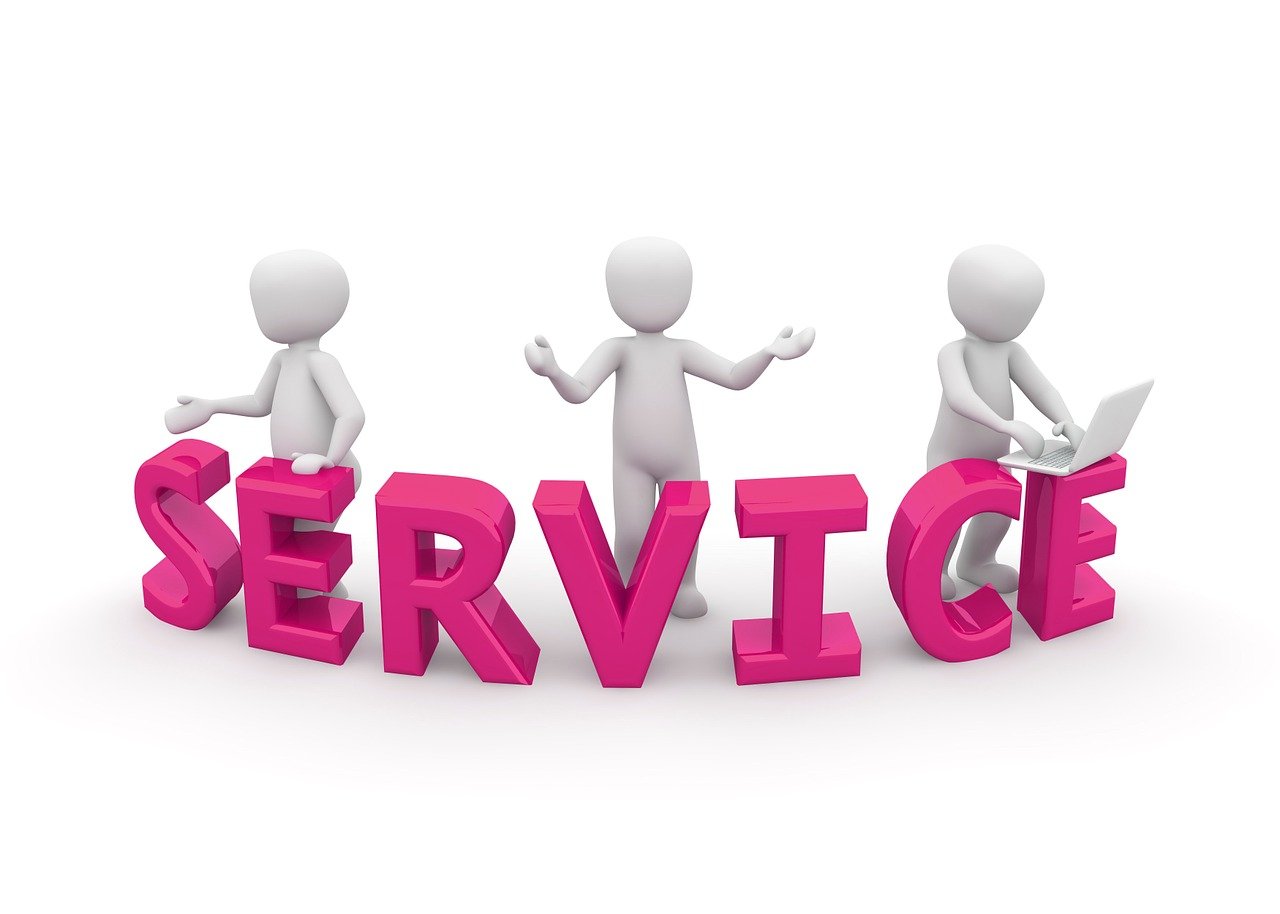
After you pick your business structure, you must register your business. This step makes your business official. It helps you open a bank account and pay the right tax.
If you are in the UK, register as a sole trader with HMRC. For a limited company, register with Companies House. In other places, you may need to register with a local office. You must pick a business name. Make sure no one else uses it. You might also need a business number or tax ID.
Here’s what you usually need to register:
Your business name
Your address
Details about the owners or directors
The type of business you run
Note: Keep all your registration papers safe. You will need them for banking, tax, and when you work with suppliers.
Licences & Permits
You cannot start selling wholesale online without the right licences or permits. The rules depend on what you sell and where you live. Some products, like food, alcohol, or electronics, need special licences. You may also need a general business licence from your local council.
Check these common permits:
Food seller’s licence (for food and drink)
Import/export licence (if you buy or sell goods from other countries)
Health and safety certificates (for some products)
Waste disposal permits (if you handle packaging or chemicals)
If you skip this step, you could get a fine or your business could close. Always check with your local council or a business adviser before you start.
Callout: Having the right licences and permits keeps your business safe and helps buyers trust you.
VAT & Tax
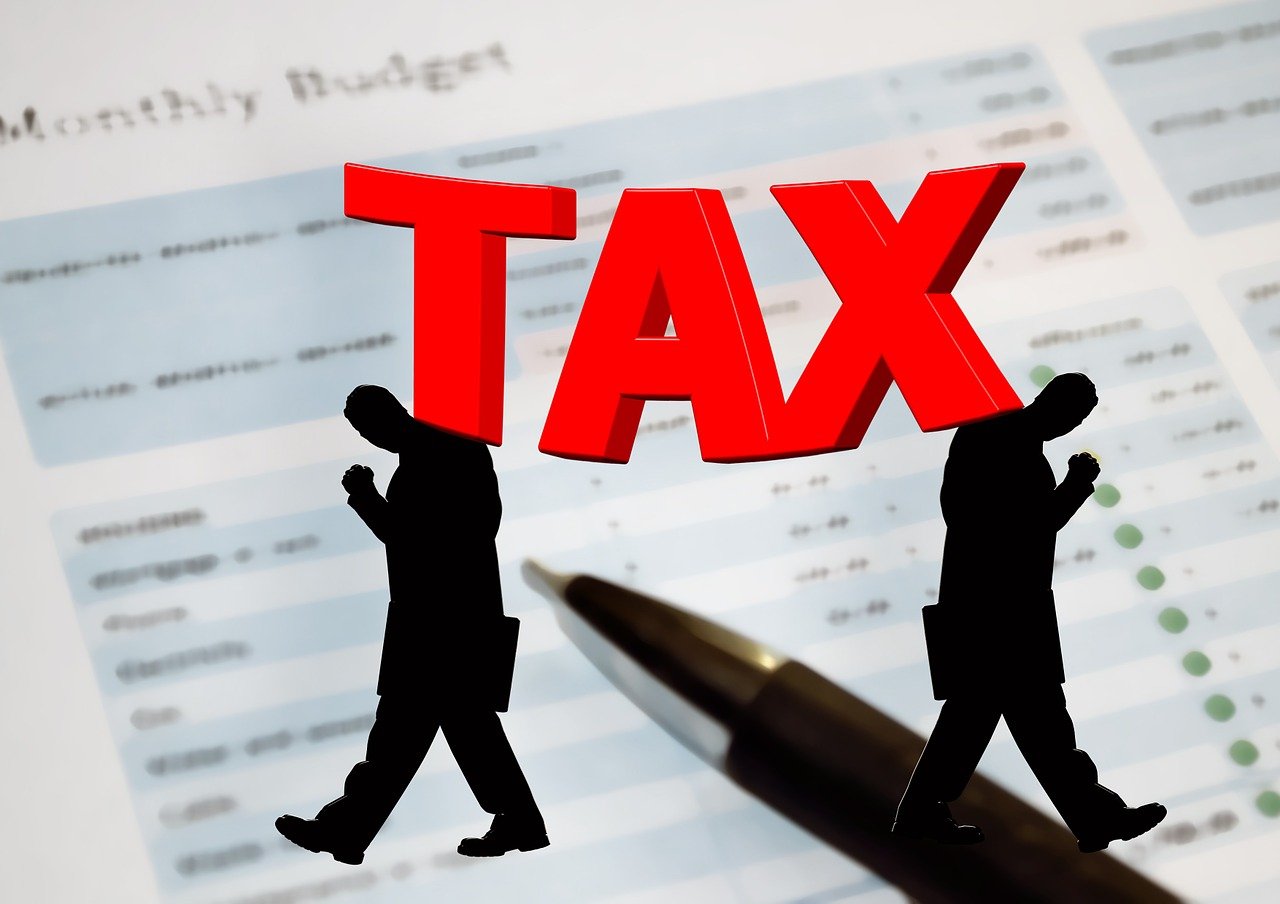
Sorting out your VAT and tax is a must before you start to sell wholesale online. You want to avoid nasty surprises later. VAT rules can feel tricky, but you can break them down into simple steps.
First, you need to know if you must register for VAT. In the UK, you must register if your turnover goes over the VAT threshold. Other countries have their own limits. Once you register, you must charge VAT on your sales and send regular returns to HMRC or your local tax office.
Here are some key VAT and tax points for online wholesale sellers:
VAT rules change depending on what you sell—goods or services—and who buys from you.
If you sell goods based in Ireland, you pay Irish VAT. The rate depends on the product type.
For B2B services, VAT is due where your buyer’s business is based. Sometimes, the buyer handles the VAT using a reverse charge.
For B2C services, VAT is usually due where your business is based.
Special rules apply if you sell to private customers in other countries, ship goods outside Ireland, or import/export goods in and out of the EU.
You might need to register for VAT in more than one country if you sell across borders.
You may have to file extra reports, like VIES, Intrastat, or MOSS, depending on where you sell.
The place of supply rules decide where VAT is due and who pays it. This matters a lot for cross-border sales.
VAT and tax rules change often, especially for online and cross-border sales. Always check for updates or ask a tax expert.
Tip: Keep good records of every sale, invoice, and VAT payment. This makes your life much easier at tax time.
You also need to pay other taxes, like corporation tax or income tax, based on your business structure. If you sell wholesale online to buyers in different countries, you must stay on top of changing rules. Missing a step can lead to fines or delays.
If you feel unsure, speak to an accountant who knows about online wholesale. They can help you set up your VAT and tax the right way from the start.
Supplier Sourcing
Finding Suppliers
You want to find suppliers you can trust. Start by looking in the right places. Many people use online wholesale marketplaces. Sites like Shopify Collective, Alibaba, AliExpress, DHgate, EK Wholesale, Faire, Wholesale Central, and IndiaMart offer a huge range of products. Shopify Collective is great if you want to sell products from other brands without holding stock. AliExpress works well for small orders, while Alibaba is better for bulk buying.
You can also try some less common ways to find suppliers. Go to trade shows in your industry. Join social media groups where business owners share tips. Become a member of trade organisations. These places help you meet suppliers face-to-face and ask questions.
Here’s a simple way to find reliable suppliers:
Do your research. Check if the supplier has a business licence and insurance.
Order samples. Test the product quality before you buy in bulk.
Ask for references. Speak to other shops who have used the supplier.
Check customer service. See how fast they reply and how they handle problems.
Compare prices and minimum order quantities. Make sure the deal works for you.
Build a good relationship. Clear communication and respect go a long way.
Tip: Always start with a small order. This helps you spot problems early and keeps your risk low.
Vetting Partners

You need to make sure your supplier is the right fit. Look at their track record. Have they worked with other businesses like yours? Ask for proof of past orders or client feedback. A good supplier will share this information.
Check how they handle shipping and returns. Fast delivery and clear return policies show they care about your business. If a supplier avoids your questions or gives vague answers, think twice before working with them.
Use this table to help you vet suppliers:
What to Check | Why It Matters |
|---|---|
Business licence | Shows they are legal |
Product samples | Lets you check quality |
References | Proves they are trustworthy |
Shipping speed | Keeps your buyers happy |
Customer service | Solves problems quickly |
Note: Trust your gut. If something feels off, look for another supplier.
Negotiating Terms
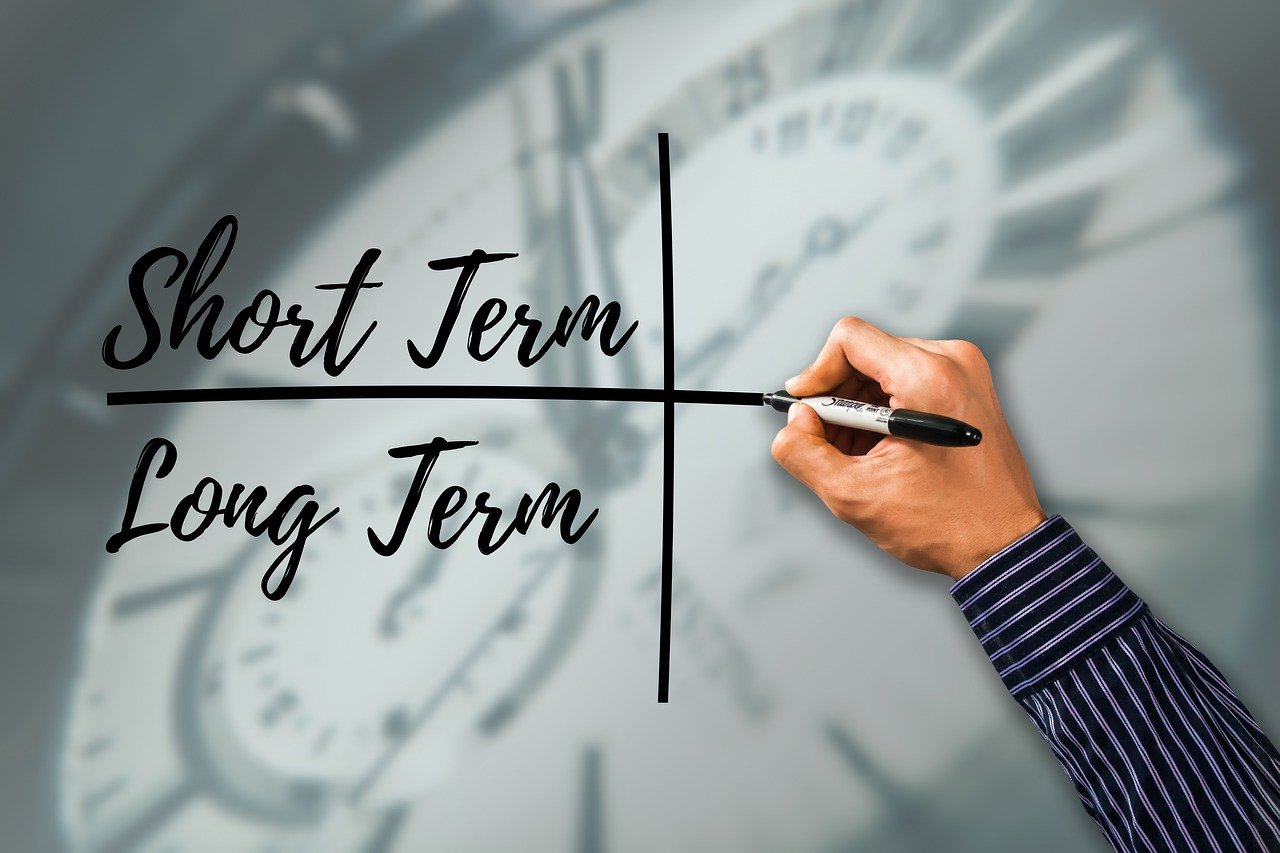
You want the best deal, but you also want a good relationship with your supplier. Start by listening to what the supplier needs. Tell them what you want clearly. This helps both sides understand each other.
Prepare before you talk. Learn about the supplier’s prices and reputation. Set your goals for the deal. Try to find a win-win solution. Sometimes you can ask for a lower price if you order more, or better payment terms if you pay quickly.
Stay positive and flexible. If you face a problem, use facts to explain your side. Be polite and open to compromise. Good negotiation builds trust and helps you work together for a long time.
Building a strong partnership with your supplier makes it easier to sell wholesale online and grow your business.
Dropshipping Options
Dropshipping has become a popular way to run a wholesale business online. You do not need to buy stock upfront or worry about storing products. Instead, you list items for sale, and your supplier ships them straight to your buyer. This method can help you start quickly and keep costs low.
You might wonder if dropshipping is right for you. Let’s look at what makes it work well and where it can cause problems.
You do not need to spend money on stock before you get orders.
You face less financial risk because you only pay for products after a customer buys.
You can offer a wide range of products without extra cost.
You can test new products easily and see what sells.
You can scale your business faster because you do not need a big warehouse.
Disadvantages of dropshipping:
You make less profit on each sale because suppliers charge more for dropshipping.
You cannot control how much stock your supplier has. Sometimes items go out of stock without warning.
You depend on your supplier for product quality and shipping speed. If they make mistakes, your customers may blame you.
Shipping can take longer, especially if your supplier is in another country.
Tip: Always check your supplier’s reviews and test their service before you offer dropshipping to your buyers.
If you want to try dropshipping, start by finding suppliers who specialise in wholesale dropshipping. Some B2B platforms, like Alibaba and Faire, now offer dropshipping options for business buyers. You can also use apps that connect your online shop to dropshipping suppliers. Make sure you read the terms and check for hidden fees.
Dropshipping can help you grow your wholesale business without big risks. You can focus on marketing and customer service while your supplier handles the rest. Just remember to keep a close eye on your suppliers and set clear rules for returns and shipping.
Sell Wholesale Online Platforms
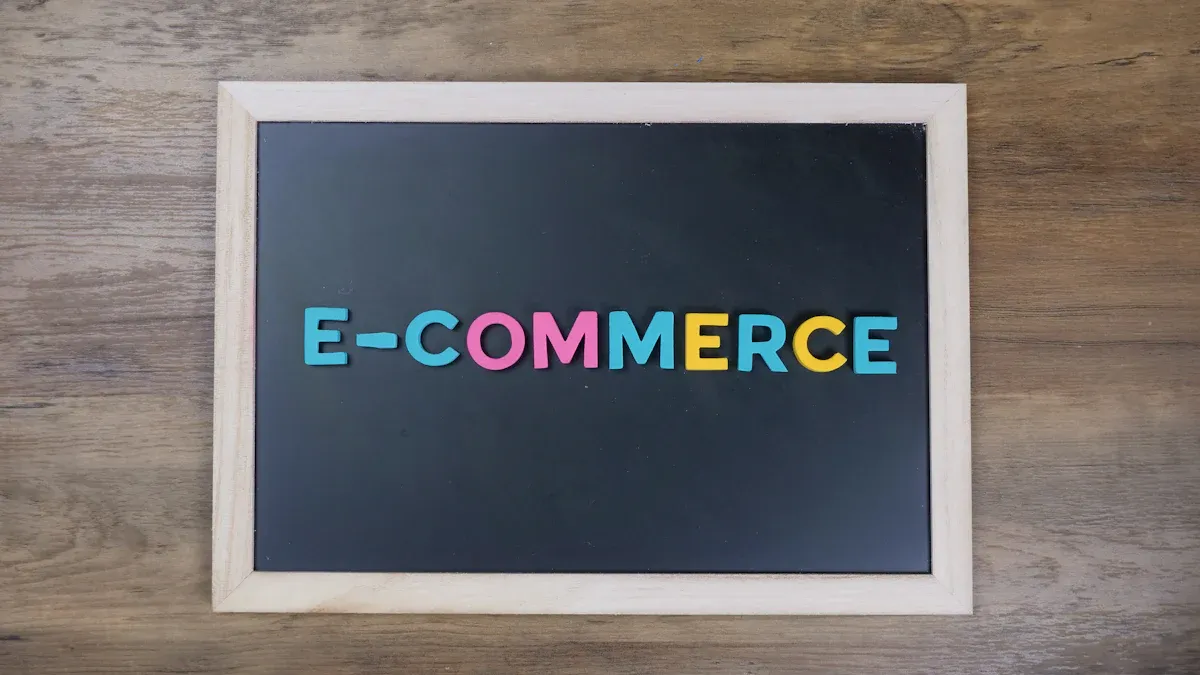
B2B Marketplaces
You may not know where to begin selling wholesale online. B2B marketplaces are a good place to start. These sites help you meet many retailers and business buyers from around the world. You do not have to make your own website at first. You can put your products on sites that already have lots of buyers.
Some well-known B2B marketplaces are Faire, Brandboom, RangeMe, and Amazon Business. Each one works in its own way and has its own rules. Faire helps small brands reach boutique shops. Brandboom lets you make digital catalogues and send them to buyers. RangeMe is good for showing your products to big retailers. Amazon Business gives you a chance to sell to many companies who want to buy in bulk.
When you use a B2B marketplace, you get tools to help with orders. You can set minimum order amounts and give special prices for big orders. Many sites also help with payments and shipping. You can try out new products and see what buyers like before you make your own website.
Tip: Pick one or two marketplaces that match your products. Learn how they work first, then try more as your business grows.
Wholesale Website

If you want more control, you can build your own wholesale website. Your website is your online shop window. You choose how it looks and how buyers use it.
A good wholesale website should be simple to use. Buyers want to find products fast, see clear pictures, and read easy descriptions. Make sure your site works well on phones and tablets too. A smart design helps you look professional and builds trust.
Security is very important for your website. Use SSL to keep buyers’ data safe. Follow privacy laws like GDPR. Give secure logins so only approved buyers see wholesale prices and order. This keeps your business safe and helps buyers feel sure about you.
Wholesale buyers need different things than retail customers. Your website should let them order in bulk, get special prices, and reorder quickly. You might let buyers ask for quotes or see deals based on how much they buy. Add search, filters, and easy menus so buyers find what they need fast.
Think about how you will earn money. Some wholesale sites charge fees, offer paid memberships, or show ads for extra cash. Pick a way that fits your goals and what your buyers want.
Note: Keep your product catalogue tidy. Group items by type or collection so buyers can find things easily.
E-commerce Features
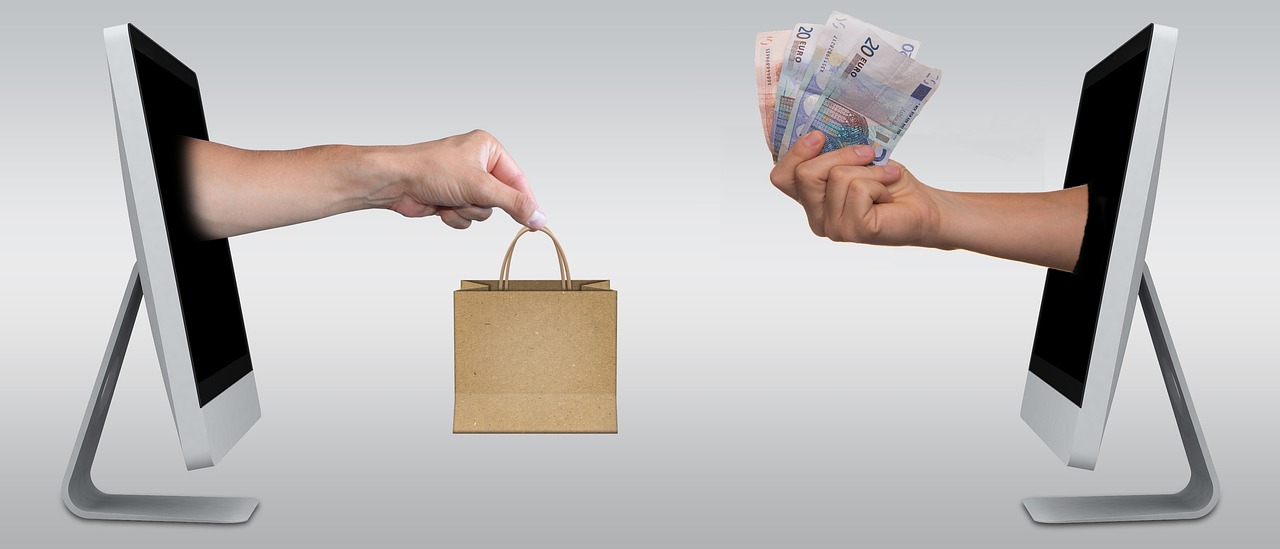
To sell wholesale online well, your platform needs the right e-commerce tools. These tools help you manage orders, track stock, and keep buyers happy.
Find a system that lets you set different prices for each buyer. You may want to give discounts for big orders or special rates for loyal buyers. Make sure you can set minimum order amounts and handle large orders without trouble.
Stock management is important. Your platform should match your stock levels so you do not sell more than you have. Connect your website to your ERP or CRM if you use one. This helps you track orders, plan for demand, and manage suppliers.
Payment choices matter too. Wholesale buyers often like bank transfers, invoices, or bulk payments. Give them a few ways to pay. Secure payment systems protect you and your buyers.
Shipping for wholesale is not the same as retail. You may need to offer bulk shipping, pallet delivery, or special handling. Let buyers pick from different shipping options at checkout.
Marketing tools help you find more buyers. Use email lists to send the right offers to the right people. Share your catalogue on LinkedIn or invite buyers to trade shows. Friendly service and quick replies help you build strong links.
Callout: A simple, easy-to-use platform makes buyers want to order from you again.
When you use the right marketplace, a good website, and smart e-commerce tools, you give your wholesale business the best chance to grow.
Payment Integration
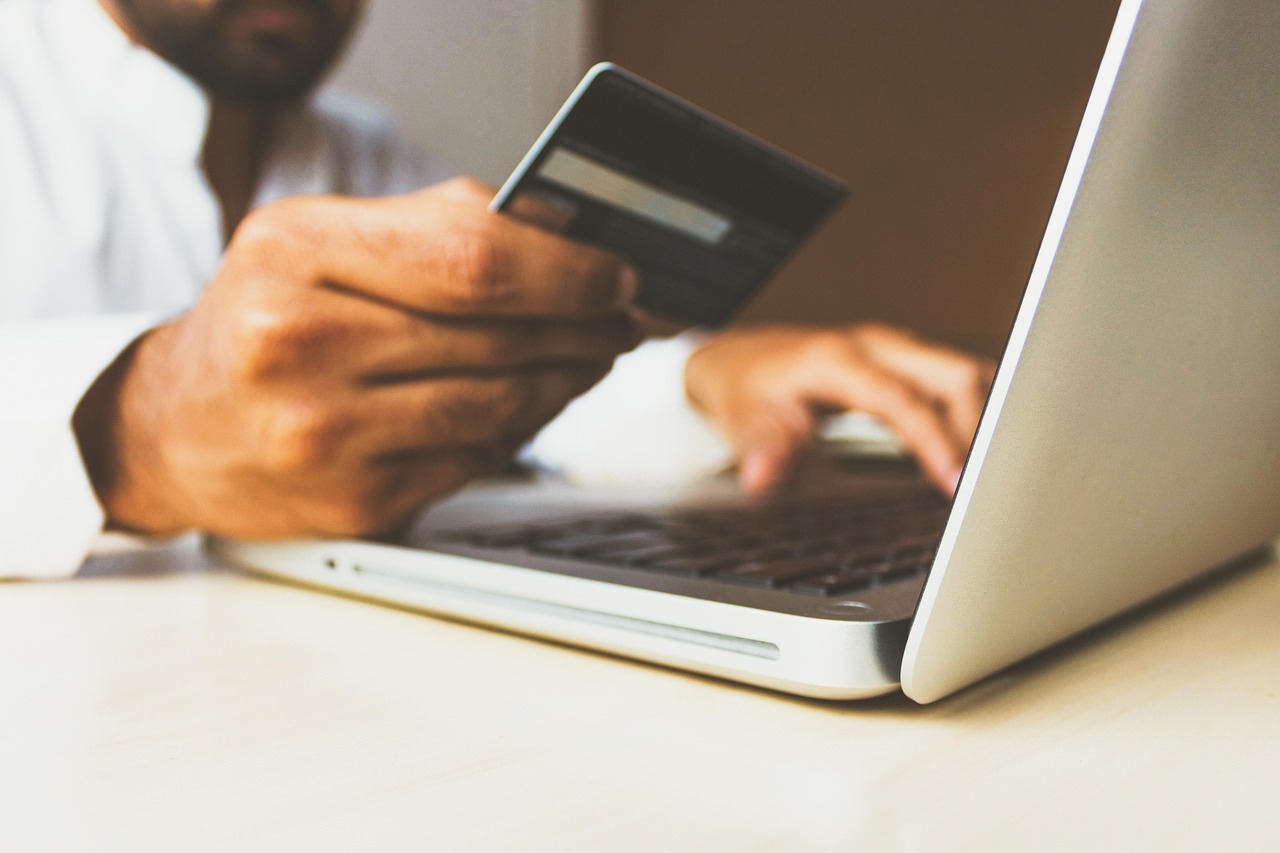
Getting paid is very important for your wholesale business. You want buyers to pay you easily and safely. The right payment integration helps with both things. When you set up your platform, you will see many payment choices. Some are better for big orders. Others are good for quick online payments. Pick the ones that suit your business and your buyers.
Here’s a simple table of popular payment integrations for wholesale e-commerce:
Payment Integration | Key Features | Best For |
|---|---|---|
Bank/Wire Transfers | Traditional, secure, direct payment method | High-value transactions requiring security and transparency |
Stripe | Seamless online payments, subscription billing, customisable invoices | Wholesale businesses needing easy online payment acceptance |
Square | Simplified online and in-person payment processing | B2B businesses with physical stores or trade show presence |
Authorize.net | Robust gateway with advanced fraud prevention | Businesses needing reliability and strong fraud protection |
PayPal | Trusted global platform with dispute resolution | Wholesale businesses with international operations |
Balance payments | Specialised B2B payment terms | Businesses managing cash flow efficiently |
Adyen | Secure global solution, multi-currency, omni-channel | Wholesale businesses with international reach and scaling needs |
eWay | Simple, reliable, enhanced cybersecurity | Businesses in Australia and New Zealand seeking affordable secure payments |
You might not know which one to pick. Bank transfers work well for large orders. They are safe and direct. Stripe and PayPal make online payments fast and simple. These help you get paid quickly. Square is useful if you sell at trade shows or in a shop. Authorize.net gives extra protection from fraud. This keeps your business safer.
Tip: Offer more than one payment option. This gives buyers more choice and helps you get more sales.
Modern payment integrations do more than just move money. They help you manage your cash flow and avoid mistakes. Many use strong encryption and extra security steps. This keeps your buyers’ details safe. Some systems send invoices and reminders for you. This saves you time chasing payments.
Did you know most B2B companies now use digital payments? They do this to work faster and save money. Using an integrated payment system means you get paid sooner. You can plan your next steps better. Over half of small businesses say all-in-one payment platforms help them manage cash flow.
Here are some things to check when choosing a payment integration:
Security features like encryption and fraud checks
Support for different currencies if you sell worldwide
Easy setup and clear fees
Automation for invoices and payment reminders
Good customer support
Note: Test your payment system before you start selling. Make sure it works well for you and your buyers.
The right payment integration helps your business grow. You spend less time on admin and more time finding buyers. Your customers will trust you more if their payments are safe.
Pricing Strategy
Wholesale Pricing
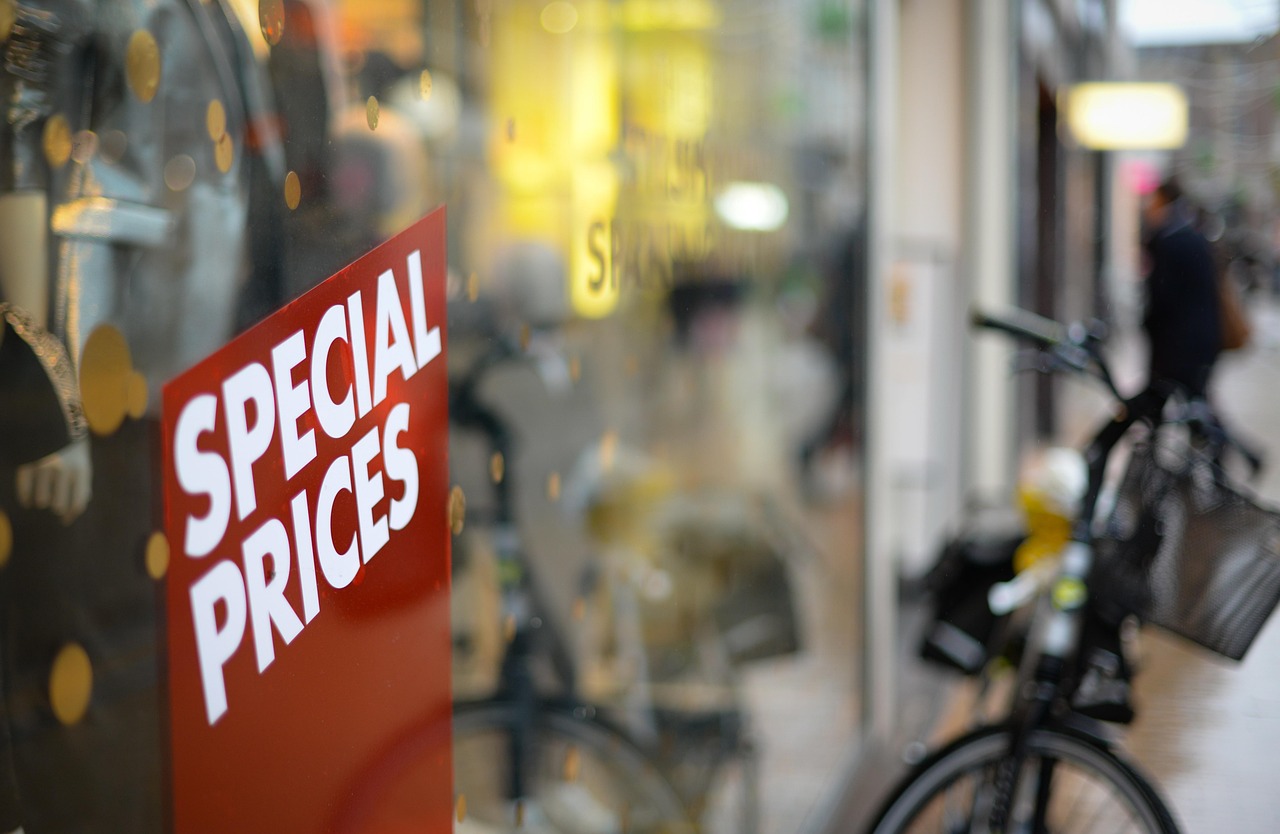
Setting your wholesale prices can feel tricky at first. You want to make a profit, but you also need to offer good value to your buyers. The right pricing strategy helps you stand out and win more orders. Many successful wholesale businesses use these approaches:
Volume-based pricing: You give bigger discounts when buyers order more. This encourages shops to buy in bulk. It helps you move more stock and keeps your buyers happy.
Competitive pricing: You check what other wholesalers charge and set your prices to match or beat them. Big names like Costco use this method. They offer low prices for bulk orders and keep customers coming back.
Discount pricing: You offer special deals or lower prices for a limited time. This can help you attract new buyers or clear out old stock.
Penetration pricing: You start with lower prices to get new buyers interested. Once you build trust, you can adjust your prices.
Dynamic pricing: You change your prices based on demand, season, or market trends. This keeps your business flexible.
Tip: Always check your costs before setting prices. Make sure you cover your expenses and leave room for profit.
Minimum Orders
Minimum orders are common in wholesale. You set a minimum order quantity (MOQ) or minimum order value (MOV) for each buyer. This protects your profit and makes shipping easier. Shops expect to buy in bulk, so do not worry about setting a minimum.
Think about your costs when you choose your minimums. If you sell small items, you might set a higher MOQ. For expensive products, a lower MOQ can work better. You can also offer different minimums for new and repeat buyers.
Here are some ways to set your minimums:
Look at your average order size.
Check what your competitors do.
Ask your suppliers if they have minimums.
Test different levels to see what works best.
Note: Make your minimums clear on your website and in your catalogue. This avoids confusion and saves time.
Discounts & Incentives
Discounts and incentives help you win more buyers and keep them coming back. You can use them to reward loyal shops or encourage bigger orders. Here are some ideas:
Bulk discounts: Offer a lower price per unit when buyers order more.
Early payment discounts: Give a small discount if buyers pay their invoice quickly.
Seasonal offers: Run special deals during busy times, like Christmas or back-to-school.
Free shipping: Offer free delivery for orders over a certain amount.
Loyalty rewards: Give repeat buyers extra discounts or gifts.
You do not need to use every incentive at once. Try a few and see what your buyers like best. Keep track of what works so you can improve your offers over time.
Callout: Smart discounts and clear minimums make your wholesale business more attractive to shops. They help you build strong, long-term relationships.
Payment Terms
Getting paid on time is a big part of running a wholesale business. You need clear payment terms so you and your buyers know what to expect. Payment terms tell your buyers when and how they should pay for their orders. If you set these rules early, you avoid confusion and keep your cash flow healthy.
You have a few choices for payment terms. Here are some of the most common ones:
Upfront payment: Your buyer pays before you ship the goods. This is the safest option for you, especially with new customers.
Net 30, Net 60, or Net 90: Your buyer has 30, 60, or 90 days to pay after you send the invoice. Many shops prefer this because it gives them time to sell the products first.
Deposit and balance: Your buyer pays a part of the total (like 30%) before you ship. They pay the rest after they get the goods.
Payment on delivery (COD): Your buyer pays when the goods arrive. This works well if you deliver in person or use trusted couriers.
Here’s a table to help you compare:
Payment Term | What It Means | Good For |
|---|---|---|
Upfront | Buyer pays before shipping | New buyers, big orders |
Net 30/60/90 | Buyer pays in 30/60/90 days | Trusted shops |
Deposit & Balance | Part paid upfront, rest after delivery | Large or custom orders |
Cash on Delivery | Buyer pays when goods arrive | Local deliveries |
Tip: Always write your payment terms on your invoices and in your contracts. This helps avoid problems later.
You might want to offer longer payment terms to your best buyers. This can help you build trust and get more repeat business. For new buyers, stick to upfront payment or a deposit until you know you can trust them.
If a buyer pays late, act quickly. Send a friendly reminder first. If they still do not pay, follow up with a phone call or another email. Keep records of all your invoices and payments. This makes it easier to track who owes you money.
Some payment systems let you set automatic reminders for unpaid invoices. This saves you time and helps you get paid faster. You can also use payment platforms that hold the money until the buyer gets the goods. This keeps things fair for both sides.
Note: Clear payment terms protect your business and help you plan for the future. Do not be afraid to talk about money with your buyers. Good buyers will respect your rules.
Sales Materials
Catalogue
Your catalogue is your shop window for wholesale buyers. It shows all your products in one place. Think of it as your product menu. Shops use your catalogue to decide what to buy. You want it to look clear and easy to read.
A good catalogue includes:
Product names and codes
Short descriptions
Prices (wholesale, not retail)
Minimum order quantities
Clear product images
Your contact details
You can make your catalogue as a PDF, a printed booklet, or even a simple web page. Many buyers like digital catalogues because they can search and share them quickly. If you use a PDF, keep the file size small so it is easy to send by email.
Tip: Update your catalogue often. Add new products and remove items you no longer sell. This keeps buyers happy and avoids confusion.
Line Sheets
Line sheets are like a quick guide for buyers. They show your products, prices, and order details in a simple format. Shops use line sheets to place orders fast. You want your line sheet to be clear and straight to the point.
What goes in a line sheet?
Item | Why It Matters |
|---|---|
Product image | Helps buyers see the item |
Product code/name | Makes ordering easy |
Wholesale price | Shows the cost per unit |
Minimum order | Sets the smallest order size |
Variants (colour, size) | Shows all options |
Lead time | Tells buyers when to expect delivery |
You can make line sheets in Word, Excel, or with design tools like Canva. Keep the layout simple. Use tables or grids so buyers can scan the page quickly.
Note: Always double-check your prices and codes before you send your line sheet. Mistakes can slow down orders.
Product Images
Great product images help you sell more. Shops want to see what they are buying. Clear photos build trust and make your products stand out.
Here’s how to make your product images work for you:
Use a plain background so the product pops.
Show the product from different angles.
Include close-ups for details.
Use good lighting to show true colours.
Keep the image size large enough for zooming.
You do not need a fancy camera. Many smartphones take great photos. Just make sure your pictures look sharp and professional.
Callout: High-quality images can make the difference between a sale and a missed chance. Take your time and get them right.
If you sell online, use the same style for all your images. This makes your catalogue and website look tidy and professional. Buyers will notice the effort you put in and feel more confident ordering from you.
Digital vs Print
You might wonder if you should use digital or print sales materials for your wholesale business. Both have their place, but each works best in different situations. Let’s break down the differences so you can choose what suits you.
Digital Sales Materials
Digital catalogues, line sheets, and product images are now the standard for many wholesale sellers. You can send them by email, share them on your website, or upload them to B2B marketplaces. Buyers can open them on their phones, tablets, or computers.
Why go digital?
You update your catalogue quickly. No need to reprint every time you add a new product.
You save money on printing and postage.
Buyers can search, zoom in, and click links for more details.
You reach buyers anywhere in the world in seconds.
You help the environment by using less paper.
Tip: Use PDFs for your digital catalogues. They look tidy and work on most devices.
Print Sales Materials
Print catalogues and line sheets still matter, especially at trade shows or in face-to-face meetings. Some buyers like to flick through a booklet or keep a copy on their desk. Print feels more personal and can leave a strong impression.
Why choose print?
You stand out at events. A well-designed booklet grabs attention.
Some buyers prefer to see and touch real pages.
Print can feel more official and trustworthy.
You can hand out copies at meetings, making it easy for buyers to remember you.
Note: Print costs more and takes longer to update. You need to plan ahead if you want to use print at a big event.
Digital vs Print: Quick Comparison
Feature | Digital | |
|---|---|---|
Cost | Low (no printing/postage) | Higher (printing, shipping) |
Update speed | Instant | Slow (need to reprint) |
Reach | Global (email, web) | Local (in-person, post) |
Interactivity | Searchable, clickable, zoomable | Physical, tactile |
Eco-friendly | Yes | No |
Impact | Modern, efficient | Memorable, personal |
Which Should You Use?
You do not have to pick just one. Many successful wholesalers use both. Send digital catalogues to most buyers. Bring printed line sheets to trade shows or meetings. Ask your buyers what they prefer. Some may want a PDF, while others love a printed booklet.
Callout: The best choice is the one that fits your buyers and your business. Try both and see what works for you.
Digital and print both help you show your products in the best light. Use them together to reach more buyers and make a strong impression.
Marketing & Finding Buyers
Online Presence
You need to look good online to get wholesale buyers in 2025. Most shops start looking for new products on the internet. Your website is like your shop window. Make sure it looks smart and loads fast. Show clear product pictures, prices, and ways for buyers to contact you easily.
A special wholesale website lets you control your brand. You can share your story and show off your best products. This helps buyers trust you. Use search engine optimisation so people find your site when they search for products like yours. Add bulk order forms so shops can buy lots at once. If you use Shopify Plus or WooCommerce, you get tools for special prices, discounts, and wholesale shipping.
Here’s a quick table of top ways and platforms to build your online presence:
Strategy/Platform | Why It Works for Wholesale Sellers |
|---|---|
Established Marketplaces | Reach more buyers, easy setup, built-in marketing traffic |
Own Wholesale Website | Full branding, no marketplace fees, direct buyer contact |
Shopify Plus/WooCommerce | Wholesale features, custom pricing, easy management |
Bulk Order Forms | Makes large orders simple for buyers |
SEO & Digital Marketing | Attracts organic traffic, builds long-term visibility |
Tip: Keep your website fresh. Add new products and take away old ones so buyers always see your best items.
Social Media
Social media helps you talk to buyers where they spend time. LinkedIn is good for business networking. You can join groups, share news, and use lead ads to get buyer details. Facebook also has lead ads to help you reach shop owners.
Instagram is great if your products look nice in photos. Share behind-the-scenes pictures, new products, and customer stories. Use hashtags to reach more people. Reply to comments and messages quickly. This shows buyers you care and helps them trust you.
You do not need to use every platform. Pick one or two where your buyers are. Post often and keep your posts friendly and helpful.
Callout: Social media is not just for posting. Use it to listen, answer questions, and make real links with buyers.
Trade Shows
Trade shows are still a great way to meet wholesale buyers face-to-face. In 2025, many shows are in-person and online. You can show your products, give out catalogues, and talk to shop owners. This helps you build trust and get feedback fast.
Before the show, get your sales materials ready and practise what you will say. Bring samples and line sheets. After the event, contact everyone you met. Send a thank-you email or a special offer to keep talking.
Trade shows also help you spot trends and see what other sellers do. You can learn a lot by walking around and chatting to people.
Note: Even if you sell wholesale online, meeting buyers in person can help you stand out from others.
Retailer Outreach
You want to get your products into more shops. Retailer outreach is how you do it. This means you reach out to shops and buyers who might want to stock your products. You do not have to wait for them to find you. You can take the first step.
Start by making a list of shops that fit your brand. Look for stores that already sell products like yours. You can find them online, in local shopping areas, or through trade directories. Make a simple spreadsheet with shop names, contact details, and notes about what they sell.
When you contact a retailer, keep your message short and friendly. Tell them who you are and why your products would work well in their shop. Mention something you like about their store. This shows you have done your homework. Attach your line sheet or catalogue so they can see your products right away.
Here’s a simple checklist for your outreach:
Research each shop before you contact them.
Personalise your email or message.
Share your best product images.
Include your wholesale prices and minimum order details.
Offer to send samples if they are interested.
Follow up after a week if you do not hear back.
Tip: Do not get discouraged if you do not get a reply right away. Shops get many emails. Sometimes a polite follow-up makes all the difference.
Phone calls can also work well. Some shop owners prefer to talk instead of reading emails. If you call, be polite and ask if it is a good time to chat. Have your main points ready. You can also visit local shops in person. Bring a sample and your line sheet. A friendly face can help you stand out.
Keep track of every shop you contact. Write down who replied, what they said, and when to follow up. This helps you stay organised and spot which shops are most interested.
You can also use LinkedIn to connect with shop owners and buyers. Send a short message and introduce yourself. Share your website or digital catalogue. LinkedIn is a good place to build business relationships over time.
Retailer outreach takes effort, but it helps you build strong links with shops. You get to know your buyers and learn what they want. This makes it easier to grow your wholesale business and get your products into more stores.
Orders & Logistics
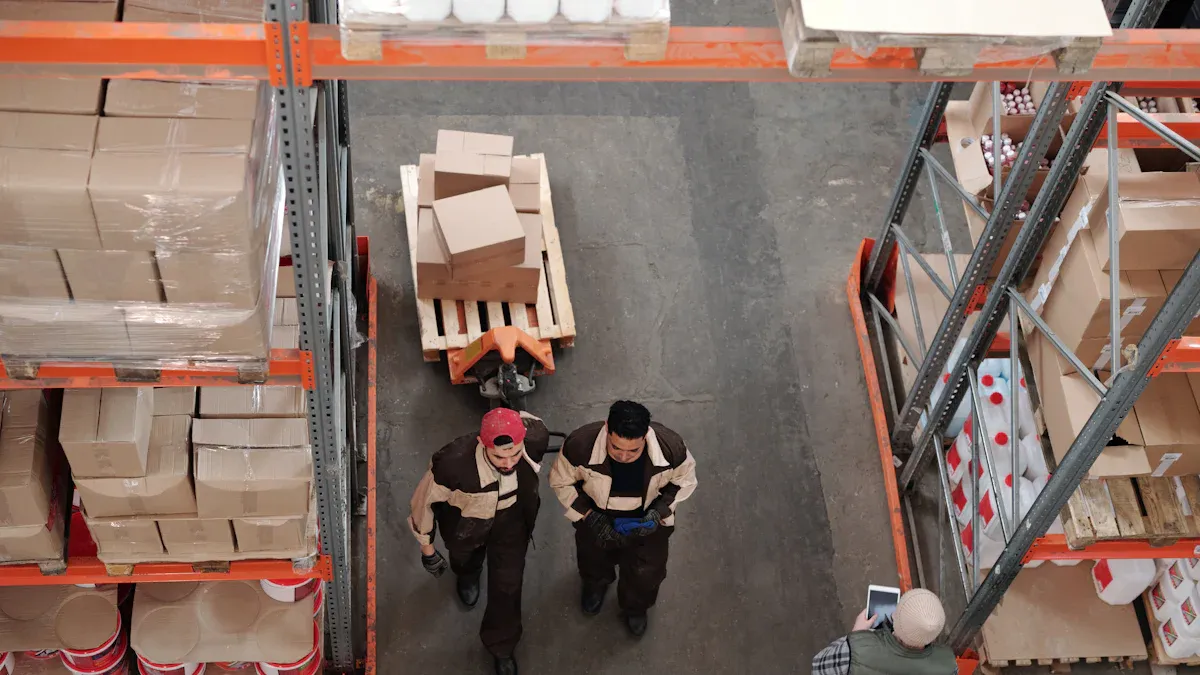
Order Processing
Order processing is where your wholesale business really comes to life. When a shop places an order, you need to act fast. Start by checking your stock. Make sure you have enough products to fill the order. If you spot any problems, let the buyer know right away.
Next, confirm the order details. Double-check the product codes, quantities, and delivery address. Mistakes here can cause delays and unhappy customers. Use an order management system if you can. This helps you track every order from start to finish.
Here’s a simple order processing flow:
Receive the order (by email, website, or marketplace).
Check stock and confirm availability.
Send an order confirmation to the buyer.
Prepare the products for shipping.
Update your records and mark the order as “in progress”.
Tip: Keep your buyers updated at every step. A quick message builds trust and shows you care.
Invoicing
Invoicing is a key part of your wholesale process. You need to send clear, accurate invoices so you get paid on time. An invoice is a bill that tells the buyer what they owe and how to pay.
Your invoice should include:
Your business name and contact details
The buyer’s name and address
Invoice number and date
List of products, quantities, and prices
VAT or tax details (if needed)
Total amount due
Payment terms (like “Net 30” or “Due on receipt”)
Your bank details or payment link
You can use invoicing software or simple templates in Word or Excel. Many e-commerce platforms create invoices for you. Always send the invoice as soon as you ship the order. This helps you get paid faster.
Note: Keep copies of all invoices. Good records help you track payments and sort out any problems later.
Shipping
Shipping is the final step before your products reach the buyer. You want to make sure every order arrives safely and on time. Choose a shipping method that fits your products and your buyer’s needs. Some buyers want fast delivery, while others prefer lower costs.
Here are some common shipping options for wholesale:
Shipping Method | Best For | Speed | Cost |
|---|---|---|---|
Courier (DHL, UPS) | Small, urgent orders | 1-3 days | High |
Freight (pallets) | Large, heavy orders | 3-7 days | Medium |
Postal service | Small, non-urgent orders | 5-10 days | Low |
Local delivery van | Nearby shops | Same/next day | Varies |
Pack your products well. Use strong boxes and plenty of padding. Label each box with the buyer’s details and order number. Add a packing slip inside so the buyer can check what they received.
Callout: Always share tracking numbers with your buyers. This helps them plan and shows you run a professional business.
If you ship overseas, check the rules for customs and import taxes. Fill out any forms needed so your products do not get stuck at the border. Good shipping makes buyers want to order from you again.
Inventory
You need to keep a close eye on your stock if you want your wholesale business to run smoothly. Good inventory management helps you avoid running out of products or having too much sitting on your shelves. When you know what you have, you can fill orders quickly and keep your buyers happy.
Start by choosing a simple system to track your stock. You can use a spreadsheet, but inventory software makes things much easier as you grow. Many e-commerce platforms have built-in tools for this. These tools update your stock levels every time you get an order or receive new products.
Here are some tips to help you manage your inventory:
Count your stock often. This helps you spot mistakes before they become big problems.
Set alerts for low stock. You will know when it is time to reorder.
Keep your best-sellers in stock. Shops want to order these again and again.
Store your products in a tidy way. Label shelves and boxes so you can find things fast.
Tip: Use the “first in, first out” (FIFO) method. Sell your oldest stock first. This stops products from going out of date or getting damaged.
A good inventory system also helps you plan for busy times. You can look at your sales history to see which products sell best in each season. This means you can order more before you run out.
Here’s a quick table to show what you should track:
What to Track | Why It Matters |
|---|---|
Product name/code | Find items quickly |
Stock level | Avoid running out |
Reorder point | Know when to buy more |
Supplier details | Order fast when needed |
Last order date | Spot slow-moving products |
If you keep your inventory organised, you will save time and money. Your buyers will trust you to deliver what they need, when they need it.
Customer Support
Customer support is key in wholesale. Shops want quick answers and help when they have a problem. If you give great support, buyers will come back to you again and again.
You can start by making it easy for buyers to contact you. Put your phone number and email on your website and in your emails. Some businesses use live chat or WhatsApp for fast replies. Pick the way that works best for you and your buyers.
Here are some ways to give top customer support:
Reply to questions quickly. Even a short message helps buyers feel valued.
Be clear and honest. If there is a delay or problem, let the buyer know right away.
Keep records of every order and message. This helps you solve problems faster.
Offer help with returns or damaged goods. Shops will trust you more if you fix issues without fuss.
Note: A friendly attitude goes a long way. Buyers remember how you make them feel, not just what you sell.
You can also make a simple FAQ page. Answer common questions about orders, shipping, and returns. This saves you time and helps buyers find answers fast.
If you want to grow, ask your buyers for feedback. Find out what they like and what you could do better. Use their ideas to improve your service.
Great customer support sets you apart from other sellers. Shops will choose you because they know you care about their business.
Growth Tips
Buyer Relationships
Strong buyer relationships help your wholesale business grow. You want buyers to trust you and come back for more orders. Start by listening to what your buyers need. Ask questions and show interest in their business. When you understand their goals, you can offer better solutions.
Keep your promises. If you say you will deliver on a certain date, make sure you do. If a problem comes up, let your buyer know right away. Honesty builds trust. A quick reply to emails or calls shows you care.
Small gestures make a big difference. Send a thank-you note after a big order. Offer a small discount to loyal buyers. Remember their birthdays or shop anniversaries. These actions help you stand out.
Tip: Ask for feedback after each order. Use their ideas to improve your service.
You can also create a simple loyalty programme. Give points for every order. Let buyers trade points for discounts or free products. This keeps them coming back.
Adapting to Change
The wholesale market changes fast. New trends, rules, and technology appear all the time. You need to stay flexible. Watch what is happening in your industry. Follow news, join online groups, and talk to other sellers.
Try new things when you spot a change. If buyers want eco-friendly packaging, offer it. If a new B2B platform becomes popular, test it out. Do not fear mistakes. You learn by trying.
Keep your product range fresh. Add new items when you see demand. Remove slow sellers. This keeps your business moving forward.
Note: Change can feel scary, but it also brings new chances. Stay open and ready to learn.
Scaling Up
Ready to take your business to the next level? Scaling up means handling more orders, reaching new markets, and growing your team. Start by checking your systems. Make sure your website, stock management, and shipping can handle more work.
Hire help if you need it. You might need someone for packing, customer service, or marketing. Good staff help you grow faster.
Look for new markets. Sell to shops in other cities or countries. Use online ads to reach more buyers. Join bigger trade shows.
Here is a simple checklist for scaling up:
Review your processes
Invest in better tools or software
Train your team
Watch your cash flow
Callout: Growth takes planning. Take small steps, check your results, and adjust as you go.
Performance Tracking
You want your wholesale business to grow. To do that, you need to know what works and what does not. Performance tracking helps you see the big picture. It shows you where you win and where you can do better. You do not need fancy tools to start. You just need to pay attention and keep good records.
Start by picking a few key things to track. These are called Key Performance Indicators (KPIs). KPIs help you measure your progress. Here are some important ones for wholesale:
Total sales: How much money do you make each month?
Number of orders: How many orders do you get from shops?
Average order value: How much does each shop spend on average?
Repeat buyers: How many shops come back to order again?
Stock turnover: How quickly do you sell your products?
Order accuracy: How often do you send the right products?
Tip: You can use a simple spreadsheet to track these numbers. Update it every week or month.
You might want to use software as your business grows. Many e-commerce platforms have built-in reports. These show your sales, best-sellers, and customer trends. Some tools even send you alerts if something changes fast.
Here is a table to help you see what to track and why it matters:
KPI | Why It Matters |
|---|---|
Total sales | Shows if your business is growing |
Average order value | Helps you spot big buyers |
Repeat buyers | Tells you if shops like your service |
Stock turnover | Stops you from running out or overstocking |
Order accuracy | Keeps your buyers happy |
You should look at your numbers often. Do not wait until the end of the year. If you see sales drop, you can act fast. Maybe you need to launch a new product or offer a discount. If you spot a best-seller, you can order more before you run out.
Ask yourself these questions:
Are my sales going up or down?
Which products sell best?
Do buyers come back for more?
Where do I lose money or time?
Note: Share your results with your team. Everyone can help find ways to improve.
Performance tracking is not just about numbers. It helps you make smart choices. You can set goals, test new ideas, and see what brings the best results. When you know your numbers, you feel more confident. You can grow your wholesale business step by step.
You now know how to sell wholesale online in 2025. Start with the right products and build strong relationships with buyers. Keep your stock accurate and your website easy to use. Offer clear prices and fast support. Stay flexible and watch for new trends. For long-term success, focus on these essentials:
Prepare well and know your market.
Choose products that shops want.
Keep your business model strong.
Track your progress and improve often.
Keep learning and adapting. Your wholesale business can grow if you stay focused and ready for change.

TangBuy: A Smarter Way to Dropship in 2025
If you're looking to stay competitive with dropshipping in 2025, speed and trend-awareness are key. TangBuy helps you stay ahead with real-time product trends, fast fulfilment, and factory-direct sourcing. With over 1 million ready-to-ship items, 24-hour order processing, and seamless Shopify integration, TangBuy makes it easier to test, scale, and succeed in today's fast-moving eCommerce landscape.
FAQ
How do you start selling wholesale online?
You start by picking products, setting up your business, and finding suppliers. Choose a platform or marketplace. Set your prices and minimum orders. Share your catalogue with shops. Keep your process simple at first.
Do you need a business licence to sell wholesale?
Yes, you usually need a business licence. Check your local rules before you begin. Some products, like food or electronics, need extra permits. Always make sure you follow the law.
What is the difference between MOQ and MOV?
MOQ means Minimum Order Quantity. MOV means Minimum Order Value. MOQ sets the smallest number of items a shop must buy. MOV sets the lowest total price for an order. Both help you protect your profit.
Can you sell wholesale and retail at the same time?
Yes, you can do both. Many brands sell to shops and direct to customers. Use different prices and offers for each group. Make sure your wholesale buyers get better deals than retail customers.
How do you find new wholesale buyers?
Try these ways:
Join B2B marketplaces
Visit trade shows
Use social media
Email or call shops directly
Ask current buyers for referrals
Tip: Keep your outreach friendly and personal. Shops like to work with people they trust.
What should you include in a wholesale invoice?
Your invoice should show:
Your business name and contact details
Buyer’s details
Invoice number and date
Product list and prices
VAT or tax info
Payment terms
A clear invoice helps you get paid on time.
How do you handle returns or damaged goods?
Set clear return rules before you start. If a shop gets damaged goods, ask for photos. Offer a replacement or refund quickly. Good customer service keeps buyers happy and builds trust.
